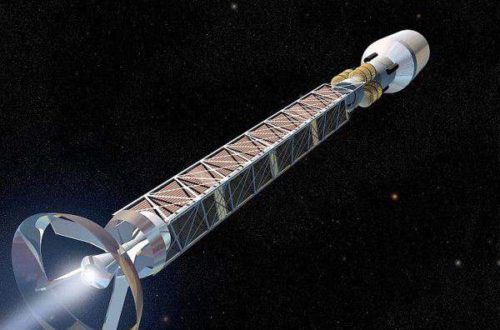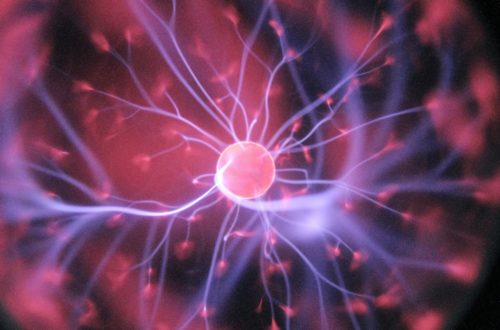Faster Than Light Travel Is Indeed Possible!

Recently, a research paper was published by Erik Lentz, PhD in Physics at the University of Washington, on achieving superluminal speeds without violating physical laws or needing negative energy. This astounding paper was published in the extremely prestigious journal, Quantum Gravity. This article explains the intriguing physics behind it and if our current technology can help us achieve it.
Why is 299,792,458 m/s the speed limit of our universe?
We always have been taught that nothing can travel faster than the speed of light but what is the prime reason behind it? Why can’t we break this speed limit and travel at superluminal speed? Well, according to Einstein’s special relativity, as you accelerate your inertial mass increases. This means as you go faster you require more energy to accelerate and as you reach c this energy tends to be infinite. But why is mass proportional to speed? Many articles do state the proportionality behind mass and speed but many fail to address the rationale behind it. To understand why an object’s mass increases with speed, we should instead think that the object’s energy is increasing. After all, mass is nothing but energy locked up in a substance. This type of mass is also known as inertial mass. So if we consider mass as energy then we will realize that mass does increase with speed as increasing speed leads to increasing kinetic energy which in turn increases the mass. This can also be expressed by the equation:
![]()
So as we approach the speed of light, γ () advances to 0. So if you take the limit of as γ approaches zero from the right, you get infinity and nothing such as infinite energy exists thus we believed that one can not travel at the speed of light, until this research paper by Dr Erik W. Lentz appeared, kindling our hope of interstellar space travel. But before we move on to discuss how this research paper tackles superluminal travel without violating some of the very fundamental laws of physics, I believe we should talk over a few points and concepts.
Physics does not prohibit faster than light travel
Yes, you read it right. Traveling faster than light is not forbidden, but getting there through c is banned.
Going faster than c does however create causality problems due to traveling between reference frames faster than light. This is because of how time and simultaneity are handled in relativity.
For any two reference frames which say two things happened at the same time, there is another which says it didn’t. Also, two reference frames observing a third reference frame may disagree on the order of events.
The actual order and timing of events aren’t set until the light has time to reach the observer. It’s important to note this isn’t the image of the event, this is the event itself. Now when you move between reference frames faster than c, you’ll be able to find a reference frame that sees you arrive before leaving.
This is allowed in relativity; there is nothing banning FTL, specifically. One just can’t conventionally accelerate up to it. But if you did find a way to be above it the math still works fine, but one will have to deal with the consequences of time travel. If the concept of simultaneity and special relativity is quite new to you then I would advise you to check out this beautiful article on special relativity.
What are warp drives and how do they work?
Warp drives had always been around, thanks to star trek but the very first scientifically backed idea of warp drive emerged in 1994 by Miguel Alcubierre. The way these warp drives work is by contracting space-time in front of you and expanding it behind you which makes an individual move forward. But the problem with Alcubierre drive is that it requires a large amount of negative energy and even though quantum mechanics predict negative energy, we have not encountered them. The requirement of negative energy is what made this idea not very plausible but the emergence of this beautiful paper, “Breaking the Warp Barrier: Hyper-Fast Solitons in Einstein-Maxwell-Plasma Theory” helps us achieve this without violating special relativity laws or using exotic states of matter.
How does this new study help us to travel at arbitrary speeds?
It works by constructing a new class of hyper-fast solitons — or ‘warp bubbles,’ compact waves that maintain their shape and move at a constant velocity — but what are solitons? Solitions are waves that move without losing their shape and the geometry of these solitons are described by the decomposition of space-time metric by ADM formalism. ADM formalism is the decomposition of four-dimensional space-time into layers of time on a three-dimensional surface. For example, a cake has multiple layers and each layer is described by a particular value and as you move up the layers, you move upwards in layers of time.
The spacelike hypersurface has three spacelike directions tangent to it. Any vector that is normal to all three spacelike directions in the enveloping space is necessarily timelike. Equivalently, the spacelike surfaces can be thought to be labeled by a function τ which gives the “time coordinate”‘s value on those surfaces.
For free particles free-falling in spacetime, their world-lines (the path that object traces in 4-dimensional spacetime) define the time flow. We call the vector tangent to this flow at each point a time-flow vector. In their free-falling frames at a particular point in space-time the metric field to describe the particle motion is the flat Minkowksian metric The observer in such a frame may expect that a particle will follow the geodesic(the path followed by a non-accelerating particle) defined by the flat Minkowksian metric since it does not feel gravitation, but, indeed the shift in position occurs since a particle really follows the geodesic defined by general space-time metric. Such shifts occur when the gravity is not uniformly distributed.
Imagine that we are live inside the falling elevator in a uniform gravitational field and place the ball at some height above the floor of this elevator the deviation of path of such a ball will be not detected, but if so, the non-uniformity of gravitational field will be detected due to the shift in the position of the ball. Such shifts are described by the shift-vector.
In this beautiful paper published by Dr Erik Lentz, he suggests the idea of space-time bubbles with the idea behind it being inspired by Alcubierre’s drive but without needing any kind of exotic matter. The way he achieves this without needing negative energy is by creating a soliton that has a “delta” shape formed from about seven diamond-shaped blocks of specially-configured ADM shift vectors.
The volume of local space that is expanded or contracted by the Lentz soliton is rather complex, containing multiple regions corresponding to negative and positive hyperbolic space expansions. In contrast, the Alcubierre soliton contains only one negative and one positive expansion region. The weak energy condition of general relativity, which is strongly violated by the Alcubierre Warp Drive, is satisfied by the Lentz soliton and kaboom, we have a solution to superluminal travel which does not violate physics laws or requires negative energy.
But is this theory applicable with no string attached?
Can we now travel faster than light? Is interstellar space travel now possible? Well, yeah but only if we can build a fuel tank, x10 the size of Earth. Lentz’s equations show us that if we were to travel at the speed of light we would need mass-energy of over 1/10 solar mass. However, we might be able to reduce the mass-energy required to an obtainable value.
Another catch attached to Lentz Soliton Drive is its connection to a conducting electromagnetic plasma. The stress-energy of plasma and classical electromagnetic fields can provide the source for producing Lentz’s space-time soliton. Unfortunately, the plasmas that we are able to produce in the laboratory contain many orders of magnitude too little energy to produce any solitons like the ones Lentz describes but their alternatives do exist.
So if we can decrease mass-energy and produce/mine electromagnetic plasma capable enough of producing Lentz’s space-time soliton then we might even be able to travel around the universe at arbitrary speeds.
Also read:
Would you like to receive similar articles by email?





